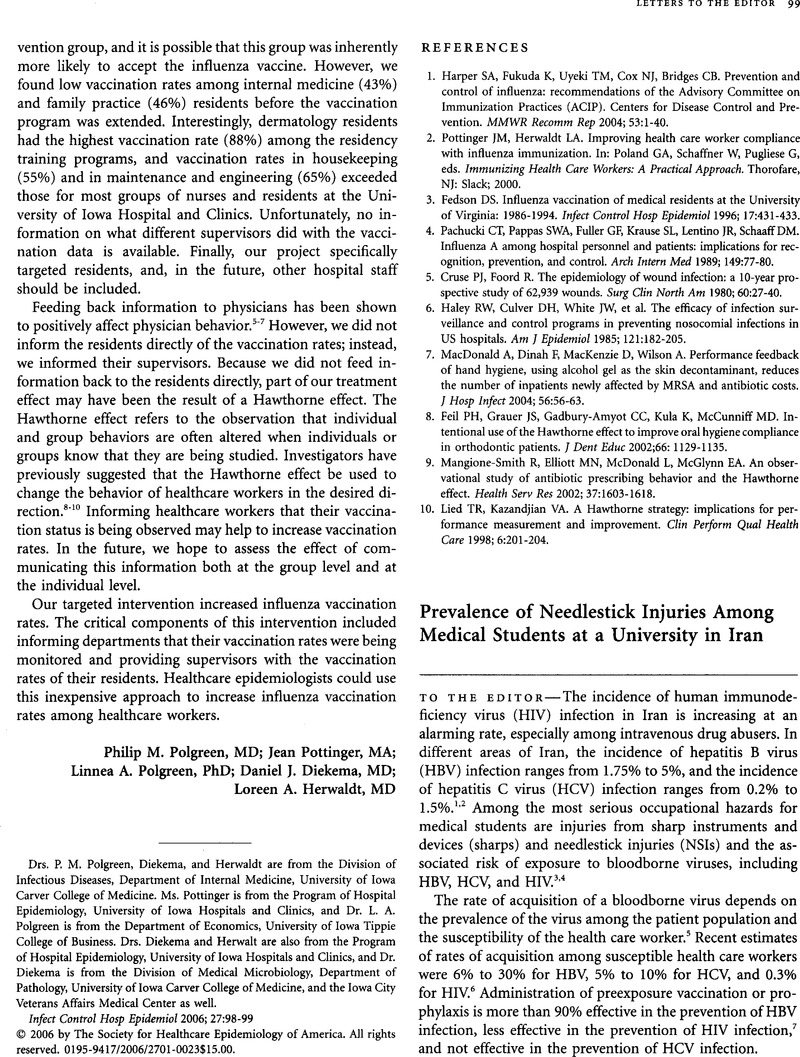Crossref Citations
This article has been cited by the following publications. This list is generated based on data provided by Crossref.
Azadi, Arman
Anoosheh, Monireh
and
Delpisheh, Ali
2011.
Frequency and barriers of underreported needlestick injuries amongst Iranian nurses, a questionnaire survey.
Journal of Clinical Nursing,
Vol. 20,
Issue. 3-4,
p.
488.
Tawiah, Philip Apraku
Oppong, Kwabena
Effah, Emmanuel Sintim
Abaka-Yawson, Albert
and
Arhin-Wiredu, Kingsley
2020.
Occupational Exposure to Blood and Body Fluids among Medical Laboratory Science Students of the University of Health and Allied Sciences during Vocational Internship in the Volta Region of Ghana.
The Scientific World Journal,
Vol. 2020,
Issue. ,
p.
1.





